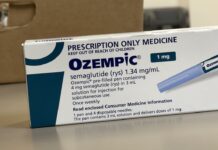More than 23.9 million Australians have My Health Record (MHR), but it is vastly underused in primary care.
A new report by the Royal Australian College of General Practitioners revealed that 31% out of 3,000 surveyed GPs rarely or never use MHR. Meanwhile, MHR insights highlighted that pharmacists access and review clinical information uploaded by other healthcare providers less often than other healthcare professionals.
PSA Digital Health Lead (and Victorian state manager) Jarrod McMaugh MPS explains five ways pharmacists can use MHR to improve healthcare outcomes.
1. Verifying requests for continued dispensing or emergency supply
While MHR records can be incomplete, this ‘catch-all’ for health data is a useful first port of call when other methods are unavailable, said Mr McMaugh.
For example, if a traveller presents to a community pharmacy claiming they left their medicines at home and their regular pharmacist can’t be contacted, MHR can be used as a validation tool to determine if supplying a Pharmaceutical Benefits Scheme (PBS) medicine via continued dispensing is appropriate.
A scan of ‘Medicines Information View’ provides a 2-year overview of a patient’s prescription and dispense records and other PBS claims – allowing pharmacists to establish if they are stabilised on a medicine.
‘Where that person’s history is in their MHR, you can see if it’s enough to satisfy those obligations that it’s an ongoing medicine unlikely to change, in which case, a month’s supply or similar, depending on the particular medicine, is appropriate to provide,’ he said.
MHR can also prove handy to deem if emergency supply of a Schedule 4 medicine – either 3 day’s supply or the smallest pack size – is warranted. For example, if a patient with asthma has exhausted their inhaler supply before obtaining another prescription.
Checking ‘Event summaries’ in MHR can confirm the patient’s diagnosis of asthma.
‘And checking their prescription history in MHR can confirm all the aspects of the medicine, [such as] what strength it is, when they last had it, what their adherence rate is like and where they are getting their scripts filled on a regular basis,’ he said.
‘Once pharmacists have enough information to establish that a medicine is part of a patient’s current therapy, it empowers them to make the decision to provide an emergency supply.’
2. Determining a post-discharge medicine plan when a patient presents a hospital prescription
If a patient presents to a community pharmacy with a hospital prescription, MHR can provide some helpful information around the context of the prescription via the discharge summary – including diagnoses, a clinical overview and current medicines on discharge.
‘It contextualises the prescription that’s in front of you as well as providing an understanding of whether the patient will be reviewed soon, are there other plans in place, or are we likely to see the person go back to hospital in a few weeks, because they don’t have a [medicine] plan in place, and they get confused,’ said Mr McMaugh.
Where post-discharge plans are uploaded to MHR, pharmacists can create and upload a Pharmacist Shared Medicines List, based on a reconciled hospital discharge medicines list.
‘If you are the pharmacist that person normally visits, and you are presented with a hospital script that has all their chronic medicines on it, it’s a normal step to check, “when did they last take this, or has there been a change”,’ he said.
But if you have no information beyond the prescription, and the patient does not have any discharge notes, you can perform that same check by accessing their MHR.
‘This helps in a number of ways such as identifying recent changes. If your pharmacy does not have the person’s dispensing history, you can also check to see what they have had dispensed elsewhere recently, so that you only send them home with the medicines they need at the moment,’ said Mr McMaugh.
3. Looking for missing vaccines in AIR history
My Health Record provides access to a patient’s full immunisation history, including records for the Australian Immunisation Register (AIR). This means a pharmacist doesn’t need to log into PRODA to access that information.
‘For example, if you’re providing home medicines review (HMR), a review of MHR could help you determine if a patient is in the criteria for having a shingles vaccines but hasn’t had one yet,’ said Mr McMaugh.
The system also indicates upcoming NIP immunisations a patient is eligible for 3 months in advance, which are marked as overdue after 1 month after the due date.
This can also help pharmacists provide comprehensive care for patients with chronic disease, such as chronic obstructive pulmonary disease (COPD), who may not be up to date with the recommended vaccines.
‘If I’m dispensing medicines for their respiratory health, I might want to look at their MHR and provide advice about what vaccinations can keep their lung health optimal, such as influenza and pneumococcal,’ he said.
With many children and adolescents missing out on vaccines during COVID-19, MHR can also help pharmacists easily determine where the gaps lie.
‘It can help pharmacists in providing catch-up vaccinations for teenagers who might not have received them in high school,’ added Mr McMaugh.
And it’s not just children – MHR is the fastest way to access AIR records at the dispensing counter to engage older adults in conversations about recommended vaccination such as pneumococcal, RSV, influenza and COVID-19.
4. Checking if a medicine is ‘new’ when you haven’t dispensed it before
When dispensing a seemingly new medicine to a patient, as far as your records are concerned, a look at ‘Prescription and Dispense View’ in MHR allows pharmacists to view all the details of their prescribed and dispensed medicines in one place.
‘If, for instance, they have had it [before] and it was recorded in MHR, it would include information on when they had it, what the dose was etc.,’ said Mr McMaugh.
It can also prompt further investigation, for example if a medicine was ceased some time ago but is now being prescribed again.
‘It may not have the answer to all the questions you have about a person’s care when they’re standing in front of you but it can certainly provide you with enough information to make follow-up inquiries,’ he said.
‘[For example], “Let’s discuss why it’s been too long. Is it something that’s been stopped and started again?” or “Is it being reinitiated in error?”’ he said.
Checking MHR can also help to shape counselling advice. ‘If it’s a brand new medicine, that will be a different conversation to when it has been prescribed five times, or it has been stopped and started again,’ Mr McMaugh added.
5. Finding a recent pathology test in a discharge summary
From next month, pathology providers are legally obligated to upload patient results to MHR – providing community pharmacists with newfound access to patient health information.
‘Pathology information is very useful for pharmacists who are doing medicine reviews of any kind, whether an HMR or a MedsCheck,’ said Mr McMaugh.
A recent pathology test can help to determine if a medicine is having a negative impact, or for some medicines if it’s having an effective impact.
For example, if a patient has a condition that impacts their potassium rate, such as chronic kidney disease, and they are prescribed a medicine to decrease their potassium levels, access to pathology results can help pharmacists determine if their potassium is in range.
‘This can give pharmacists a prompt to check if the patient is on a higher dose of the medicine, or ask if they stopped taking their medicine,’ he said.
One thing to be wary of is that MHR will contain patients’ entire pathology history.
‘So if you looked at a result that was 6 months old, it’s probably not relevant,’ Mr McMaugh added.



 Now a PhD candidate, former Sudanese refugee and NSW Pharmacist of the Year
Now a PhD candidate, former Sudanese refugee and NSW Pharmacist of the Year  David North OAM
David North OAM NSW Early Career Pharmacist of the Year Lily Pham
NSW Early Career Pharmacist of the Year Lily Pham



 Professor Stephen Nicholls[/caption]
Professor Stephen Nicholls[/caption]





